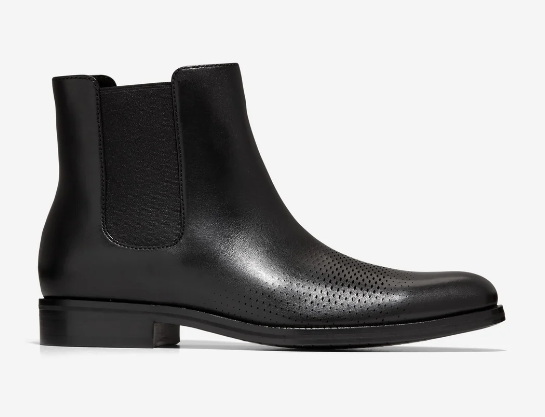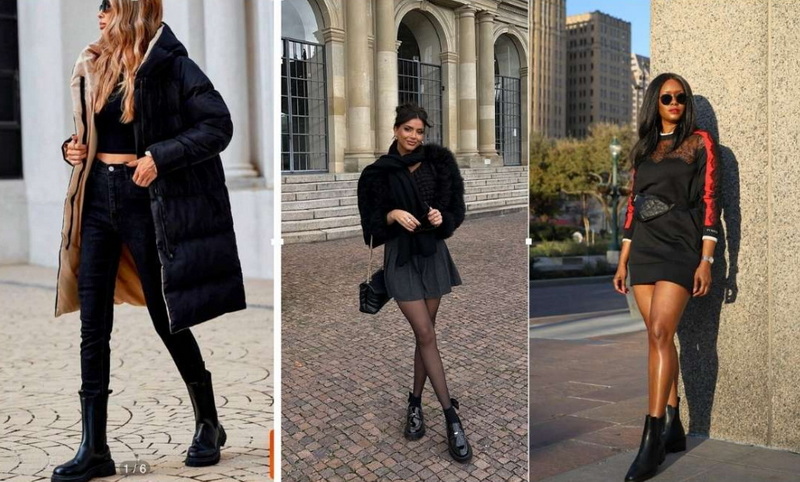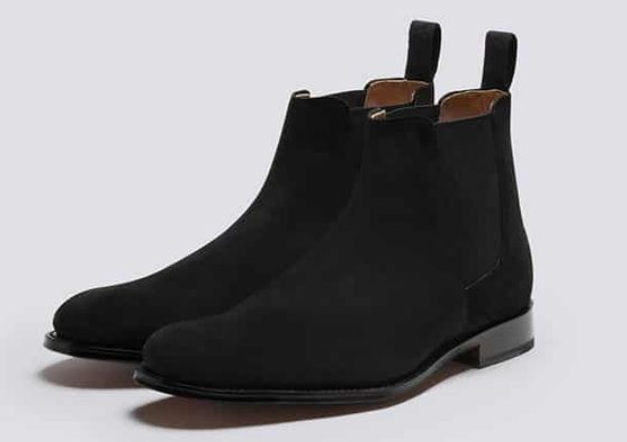Content Menu
● Understanding the Differences Between Men's and Women's Shoes
>> Size Differences
>> Width and Shape Differences
>> Style and Design
● How to Convert Women's Shoe Sizes to Men's
● Can Women Wear Men's Shoes Comfortably?
>> Fit Considerations
>> Style and Aesthetic Preferences
● When Might Men's Shoes Not Be Suitable for Women?
● Benefits of Wearing Men's Shoes for Women
● Tips for Women Buying Men's Shoes
● Conclusion
● FAQ
>> 1. Can women wear men's shoes without discomfort?
>> 2. How do I convert my women's shoe size to men's?
>> 3. Are men's shoes wider than women's?
>> 4. Can men wear women's shoes?
>> 5. Are there unisex shoes that fit both men and women?
● Citations:
When it comes to footwear, the question "Do men's shoes fit women?" is a common one that many women ask, especially when they find styles or sizes in the men's section that appeal to them. The answer is nuanced and depends on several factors including size conversion, foot shape, shoe width, and style preferences. This article explores the differences between men's and women's shoes, how to convert sizes, the fit considerations, and practical advice for women who want to wear men's shoes.

Understanding the Differences Between Men's and Women's Shoes
Size Differences
One of the primary differences between men's and women's shoes is the sizing system. Men's shoe sizes are generally larger than women's for the same foot length. The most commonly accepted conversion is that women's shoe sizes are approximately 1.5 sizes larger than men's. For example, a women's size 8 typically corresponds to a men's size 6.5. Conversely, men shopping for women's shoes usually need to go up 1.5 sizes (e.g., men's size 8 equals women's size 9.5)[1][3][6].
Width and Shape Differences
Beyond length, width is a critical factor. Men's shoes tend to be wider, reflecting the average anatomical differences in foot shape. Men generally have broader feet, while women's feet are narrower, particularly in the heel and midfoot areas. This means that even if a woman converts her size correctly, the fit might feel loose if the shoe is too wide. Conversely, men trying on women's shoes may find them too tight, especially if they have wider feet[1][2][4][6].
Style and Design
Men's and women's shoes also differ in style and design. Women's shoes often feature narrower shapes, higher heels, and more decorative elements such as bows, colors, and patterns. Men's shoes tend to be more utilitarian with flatter soles and fewer embellishments. However, many shoes today are designed to be unisex or gender-neutral, especially in categories like athletic shoes, hiking boots, or casual sneakers, where function often outweighs form[1][4].
How to Convert Women's Shoe Sizes to Men's
If a woman wants to wear men's shoes, the first step is to convert her size. The general rule is to subtract 1.5 from the women's size to find the equivalent men's size. For example:
- Women's size 8 = Men's size 6.5
- Women's size 9 = Men's size 7.5
This conversion is a starting point, but sizing can vary by brand and shoe type, so trying shoes on or checking specific brand sizing charts is recommended[1][3][6].

Can Women Wear Men's Shoes Comfortably?
Fit Considerations
Women can wear men's shoes comfortably if they account for the width and length differences. Since men's shoes tend to be wider, women with wider feet or those who prefer a roomier fit might find men's shoes more comfortable. However, women with narrower feet may find men's shoes too loose, which can cause discomfort or instability.
Trying shoes on in person is ideal, but if purchasing online, it is advisable to read reviews, check return policies, and consider brands that offer unisex or wider options. Some women even find that men's shoes provide better arch support or cushioning, depending on the shoe's design and intended use[1][2][4].
Style and Aesthetic Preferences
Many women are attracted to the styles and colors available in men's shoes, especially in categories like sneakers or casual footwear. Men's shoes often come in neutral or darker colors, which some women prefer over the brighter or more decorative options in women's shoes. Additionally, some women find that men's shoes better suit their foot shape or provide a desired look, such as a chunkier sole or minimalist design[1][2][3].
When Might Men's Shoes Not Be Suitable for Women?
Despite the potential for a good fit, there are cases where men's shoes may not be suitable for women:
- Heel Height: Women's shoes often have higher heels, which affect foot positioning and gait. Men's shoes usually lack this feature, which might feel less comfortable for women accustomed to heels[1].
- Toe Box Shape: Women's shoes sometimes have a narrower or more tapered toe box, while men's shoes are generally wider. This difference can affect comfort, especially for women with narrower toes[2][6].
- Arch Support and Foot Anatomy: Women's feet tend to have different arch shapes and pressure points. Some shoes are designed to accommodate these differences, so men's shoes might not provide the same level of support in certain cases[6].
Benefits of Wearing Men's Shoes for Women
- Wider Fit: Ideal for women with wider feet who struggle to find comfortable women's shoes.
- Style Variety: Access to different colors, designs, and styles not available in women's sections.
- Durability: Men's shoes, especially athletic and work shoes, may be constructed with more robust materials.
- Cost-Effectiveness: Sometimes men's shoes offer better value or sales opportunities.
Tips for Women Buying Men's Shoes
- Convert Sizes Carefully: Use the 1.5 size difference as a guide but verify with brand-specific charts.
- Check Width: If possible, look for men's shoes available in narrower widths or unisex options.
- Try Them On: Fit is subjective; comfort should be the priority.
- Consider Purpose: For running or sports, ensure the shoe supports your foot type and activity.
- Use Technology: Some brands offer 3D foot scanning to recommend the best size and fit[4].
Conclusion
In summary, men's shoes can fit women, but understanding the differences in sizing, width, and foot shape is essential for a comfortable fit. Women with wider feet or those seeking different styles may benefit from exploring men's shoes, provided they carefully convert sizes and consider fit nuances. The rise of unisex footwear and advanced sizing technologies is making it easier than ever for everyone to find shoes that fit well and look great, regardless of gender labels.

FAQ
1. Can women wear men's shoes without discomfort?
Yes, many women can wear men's shoes comfortably, especially if they account for size and width differences. Trying shoes on and ensuring a proper fit is key[1][2].
2. How do I convert my women's shoe size to men's?
Subtract approximately 1.5 from your women's size to find the equivalent men's size (e.g., women's 8 = men's 6.5). Always check brand-specific sizing charts for accuracy[1][3].
3. Are men's shoes wider than women's?
Generally, yes. Men's shoes are designed with a wider base to accommodate broader feet, while women's shoes tend to be narrower[1][2][6].
4. Can men wear women's shoes?
Men can wear women's shoes by going up about 1.5 sizes, but they may find the width too narrow, especially if they have wider feet[1][4][6].
5. Are there unisex shoes that fit both men and women?
Yes, many brands offer unisex shoes that typically use men's sizing. Women should convert sizes accordingly. Unisex shoes often have a more neutral design and fit[1][4].
Citations:
[1] https://www.chums.co.uk/blog/is-there-a-difference-between-mens-and-womens-shoes
[2] https://www.reddit.com/r/running/comments/6irc2p/can_women_wear_mens_shoes_or_are_there_anatomical/
[3] https://fullscopesports.com/how-to-convert-womens-to-mens-shoe-size/
[4] https://shopqbyqs.com/blogs/news/do-men-s-shoes-fit-the-same-as-women-s-a-comprehensive-guide
[5] https://mallet.com/blogs/news/are-mens-shoe-sizes-the-same-as-womens
[6] https://runrepeat.com/guides/differences-mens-womens-running-shoes
[7] https://support.newbalance.com/s/article/NBUS-How-to-Convert-Your-Women-s-Shoe-Size-to-a-Men-s-Shoe-Size
[8] https://gufanpei.com/can-women-wear-mens-shoes-6-things-you-need-to-know/

















